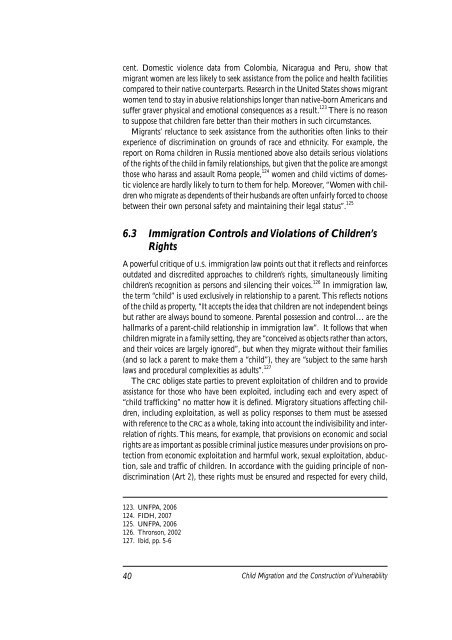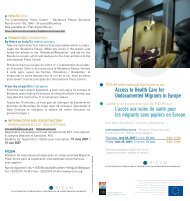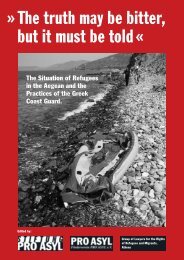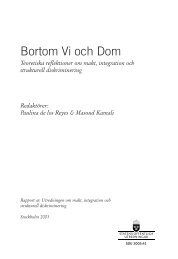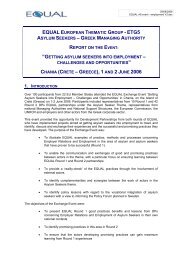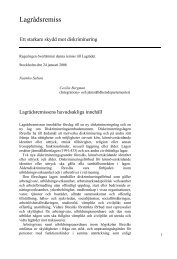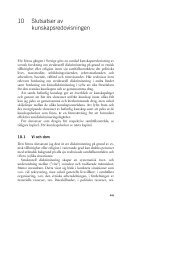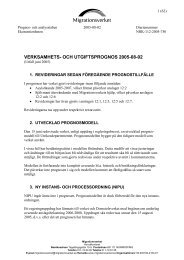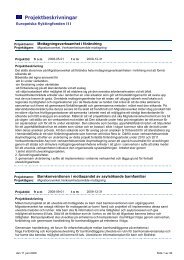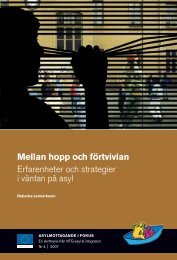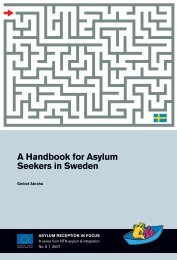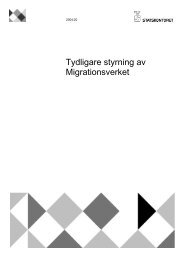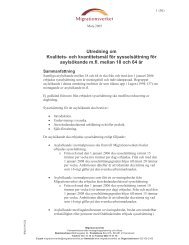and the Construction of Vulnerability - Child Trafficking
and the Construction of Vulnerability - Child Trafficking
and the Construction of Vulnerability - Child Trafficking
Create successful ePaper yourself
Turn your PDF publications into a flip-book with our unique Google optimized e-Paper software.
cent. Domestic violence data from Colombia, Nicaragua <strong>and</strong> Peru, show that<br />
migrant women are less likely to seek assistance from <strong>the</strong> police <strong>and</strong> health facilities<br />
compared to <strong>the</strong>ir native counterparts. Research in <strong>the</strong> United States shows migrant<br />
women tend to stay in abusive relationships longer than native-born Americans <strong>and</strong><br />
suffer graver physical <strong>and</strong> emotional consequences as a result. 123 There is no reason<br />
to suppose that children fare better than <strong>the</strong>ir mo<strong>the</strong>rs in such circumstances.<br />
Migrants’ reluctance to seek assistance from <strong>the</strong> authorities <strong>of</strong>ten links to <strong>the</strong>ir<br />
experience <strong>of</strong> discrimination on grounds <strong>of</strong> race <strong>and</strong> ethnicity. For example, <strong>the</strong><br />
report on Roma children in Russia mentioned above also details serious violations<br />
<strong>of</strong> <strong>the</strong> rights <strong>of</strong> <strong>the</strong> child in family relationships, but given that <strong>the</strong> police are amongst<br />
those who harass <strong>and</strong> assault Roma people, 124 women <strong>and</strong> child victims <strong>of</strong> domestic<br />
violence are hardly likely to turn to <strong>the</strong>m for help. Moreover, “Women with children<br />
who migrate as dependents <strong>of</strong> <strong>the</strong>ir husb<strong>and</strong>s are <strong>of</strong>ten unfairly forced to choose<br />
between <strong>the</strong>ir own personal safety <strong>and</strong> maintaining <strong>the</strong>ir legal status”. 125<br />
6.3 Immigration Controls <strong>and</strong> Violations <strong>of</strong> <strong>Child</strong>ren’s<br />
Rights<br />
A powerful critique <strong>of</strong> U.S. immigration law points out that it reflects <strong>and</strong> reinforces<br />
outdated <strong>and</strong> discredited approaches to children’s rights, simultaneously limiting<br />
children’s recognition as persons <strong>and</strong> silencing <strong>the</strong>ir voices. 126 In immigration law,<br />
<strong>the</strong> term “child” is used exclusively in relationship to a parent. This reflects notions<br />
<strong>of</strong> <strong>the</strong> child as property, “It accepts <strong>the</strong> idea that children are not independent beings<br />
but ra<strong>the</strong>r are always bound to someone. Parental possession <strong>and</strong> control… are <strong>the</strong><br />
hallmarks <strong>of</strong> a parent-child relationship in immigration law”. It follows that when<br />
children migrate in a family setting, <strong>the</strong>y are “conceived as objects ra<strong>the</strong>r than actors,<br />
<strong>and</strong> <strong>the</strong>ir voices are largely ignored”, but when <strong>the</strong>y migrate without <strong>the</strong>ir families<br />
(<strong>and</strong> so lack a parent to make <strong>the</strong>m a “child”), <strong>the</strong>y are “subject to <strong>the</strong> same harsh<br />
laws <strong>and</strong> procedural complexities as adults”. 127<br />
The CRC obliges state parties to prevent exploitation <strong>of</strong> children <strong>and</strong> to provide<br />
assistance for those who have been exploited, including each <strong>and</strong> every aspect <strong>of</strong><br />
“child trafficking” no matter how it is defined. Migratory situations affecting children,<br />
including exploitation, as well as policy responses to <strong>the</strong>m must be assessed<br />
with reference to <strong>the</strong> CRC as a whole, taking into account <strong>the</strong> indivisibility <strong>and</strong> interrelation<br />
<strong>of</strong> rights. This means, for example, that provisions on economic <strong>and</strong> social<br />
rights are as important as possible criminal justice measures under provisions on protection<br />
from economic exploitation <strong>and</strong> harmful work, sexual exploitation, abduction,<br />
sale <strong>and</strong> traffic <strong>of</strong> children. In accordance with <strong>the</strong> guiding principle <strong>of</strong> nondiscrimination<br />
(Art 2), <strong>the</strong>se rights must be ensured <strong>and</strong> respected for every child,<br />
123. UNFPA, 2006<br />
124. FIDH, 2007<br />
125. UNFPA, 2006<br />
126. Thronson, 2002<br />
127. Ibid, pp. 5-6<br />
40<br />
<strong>Child</strong> Migration <strong>and</strong> <strong>the</strong> <strong>Construction</strong> <strong>of</strong> <strong>Vulnerability</strong>


